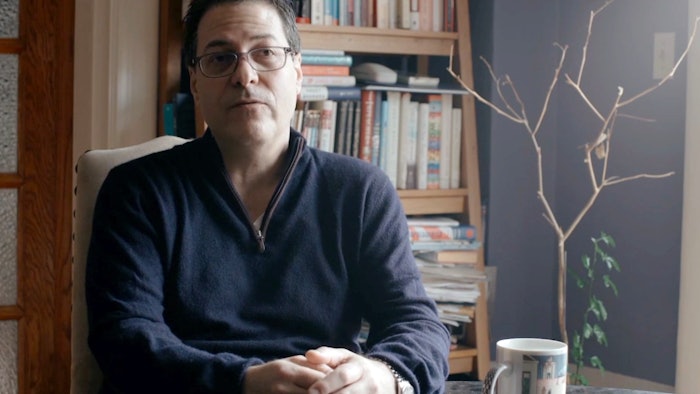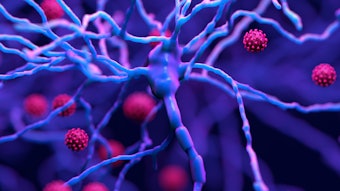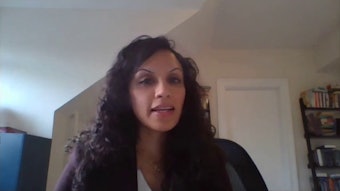Elkind: Building bridges to a better future
In Wednesday's Opening Main Event, AHA President Mitchell S.V. Elkind addressed the importance of connection between specialties for best outcomes.

AHA President Mitchell S.V. Elkind advocated for breaking down barriers, making connections and building bridges in order to strengthen and improve the path forward for the American Heart Association and the specialty. He made his remarks during Wednesday’s Opening Main Event of ISC 21.
“Having neurologists at the heart of the AHA has never been more appropriate,” Elkind said. He pointed to the connections—or bridges—between the heart and the brain, between cardiology and neurology.
“As we’ve learned during the pandemic, fields that seem distinct, may actually be linked. Consider, for example, the relationship between virology and cardiovascular science: SARS-CoV-2, the coronavirus that causes COVID-19, infects platelets, provokes myocarditis and triggers microvascular thrombosis, often leading to strokes,” he said. “To outsmart this insidious virus, we must engage all of our resources, break down barriers and work together across disciplines.”
Elkind traced bridge building throughout the AHA’s history and his own career to illustrate the power and resulting progress of making connections.
Pointing to the genesis of the AHA in 1924, he identified streptococcal disease as one of the first challenges pioneering cardiologists faced.
“Children suffering from rheumatic fever occupied almost a quarter of pediatric beds. While doctors and nurses cared for them, the AHA worked to educate and advocate for patients with the illness.” According to Elkind, those efforts brought the incidence in the United States of rheumatic fever to nearly zero, even before penicillin.
From that date forward, Elkind reviewed how the association tackled other clinical and public health problems in heart and vascular disease, including stroke. The AHA formally launched the American Stroke Association 20 years ago, acknowledging the centrality of stroke to its mission.
Recalling his own career, Elkind pinpointed a number of key connections. In particular, he pointed to books of Oliver Sacks, such as Migraine. “That book, and his others – like Awakenings, and The Man Who Mistook His Wife for a Hat – beautifully depict the stories that patients tell; and how their symptoms, like aphasia, agnosia, anosmia and apraxia, intertwine with their lives, in a sense becoming their lives, since there’s no other way for them to interact with the world. I became fascinated by the connection between gray matter and human experience,” Elkind said.
He credited Oliver’s books with teaching him to pay careful attention to a patient’s story as it provides a window into their world.
“The respect that Dr. Sacks showed his patients demonstrated the benefit of rigorous active listening, so much more challenging in our era of commercial medicine,” he said. “To this day, when we see a patient with complicated migraine on rounds, I encourage our residents and fellows to read Chapter 3 of Migraine for the best description of the migraine aura in all its variety.”
Elkind also recalled his study of the philosophy of mind in college. “I attempted to understand how material things like nerves and their axons could give rise to thoughts and feelings. How could one bridge that divide, between the material and the intrinsically personal, intimate, subjective?”
In fact, Elkind said his undergraduate thesis focused on the writings of John Dewey, a pragmatic philosopher, who emphasized the importance of practice and application over rote memorization, a novel and controversial concept in its day.
“Central to Dewey’s approach was breaking down the barriers between fields created by artificial dualisms: education versus experience, knowledge versus action, science versus the arts. Dewey’s ability to find unexpected commonalities appealed to me as a student, and still does as a physician,” Elkind said.
During his early training, Elkind recalled how stroke was a leading cause of death in the U.S. and globally with only limited treatments available. He traced the strides from the introduction of tPA for acute stroke to today’s thrombectomies for large vessel occlusion.
“Despite our successes with thrombolysis and thrombectomy, stroke often doesn’t present with acute, severe deficits amenable to these treatments. Many people are affected by microinfarcts deep within the brain; these can cause the slow progressive decline in function seen in many of us as we age. This is effectively a form of brain failure, akin to heart failure.”
The notion that neurodegenerative diseases exist completely apart from vascular disease has been seriously challenged recently, he said. Evidence has shown that vascular risk factors, like hypertension, diabetes, obesity and atrial fibrillation, are associated with cognitive decline and dementia, and in particular with Alzheimer’s disease. This is helping us begin to build the bridges connecting the vascular and the neurodegenerative, he said.
Epidemiology provides another bridge between disciplines, from the brain to infectious disease. Amid the global coronavirus pandemic, the hypothesis that infections trigger cerebrovascular disease has grown even more pressing.
“SARS-CoV-2 spurs us to build more bridges between infectious disease and stroke. We’re again seeing that the greatest innovations and discoveries occur in the intersection between fields, especially when we can bring together people with different backgrounds and different areas of expertise.”
In closing, Elkind challenged his audience to bridge the divide between knowledge and action, scholarship and practice.
“As medicine and science have become increasingly specialized, we risk losing the connection between study and experience, between what we know and why it’s worth knowing. It’s certainly valuable to know how the coronavirus causes thromboinflammation, or how it can lead to strokes throughout the brain,” he said. “But what greater value if we could also learn how to build social solidarity … and foster communal compassion in an effort to protect us from this illness, or others likely to appear in the future.”








